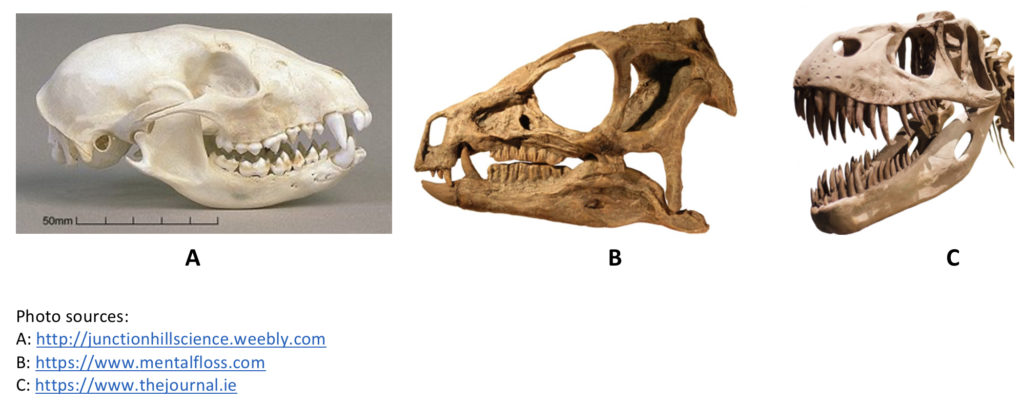
Listening Practice 3
Multiple Choice with Pictures
Listen to the audio clip below. Use the information in the audio clip to answer the question. The answer to the question will be one of the pictures, either picture A, picture B or picture C. This practice exercise is focused on information about dinosaurs.
This particular exercise is more difficult and would be aimed at those around IELTS band 7 or higher. However, if you are currently working at a lower level, it will still be good practice to listen to the recording and have a go!
In the question, you will be told what aspect of the information in the recording you need to focus on in order to find the correct answer. REMEMBER: you will just give a one letter answer in response to this question.
A final top tip – it is likely that all three answers would make sense as the correct answer – your job is to listen carefully for the information that defines the answer as one of the pictures and not the others.
Question:
Look carefully at the multiple choice picture options. Listen to the audio clip and answer the question below.
Which of these fossilised skulls has the teeth of a theropod dinosaur?

Audio Clip
Listen to the audio file by clicking on the play button:
Transcript:
Paleontologists use fossil evidence preserved in ancient rock to discover how long-extinct animals lived and behaved. In most cases, a fossilized bone is actually a rock made out of minerals, with no trace of the original bone material.
To discover how organisms lived in the past, paleontologists look for clues preserved in ancient rocks—the fossilized bones, teeth, eggs, footprints, teeth marks, leaves, and even dung of ancient organisms. Fossilised jaws, teeth, and dung provide important clues about what non-avian dinosaurs ate.
Most theropod dinosaurs had teeth that were pointed, slightly curved backwards, and serrated. The sharp points pierced the meat, and the serrations helped slice it by catching and tearing muscle fibers. Meat eaters didn’t chop or grind their food; they swallowed chunks whole.
Transcript adapted from: https://www.amnh.org/dinosaurs/dinosaur-facts
ANSWER
- C
